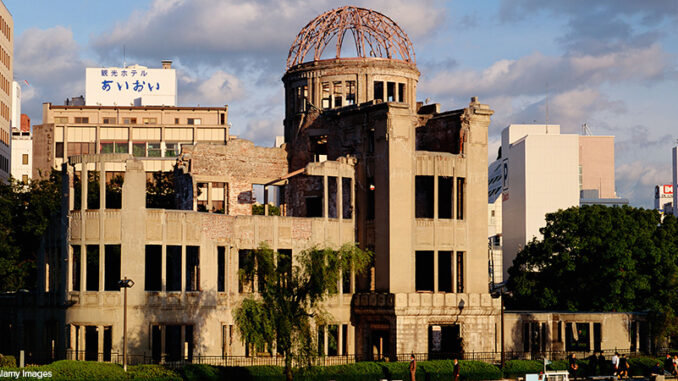
Seventy-five years ago last week, the United States dropped atomic bombs on two Japanese cities: Hiroshima (August 6, 1945) and Nagasaki (August 9, 1945). This decision was largely credited with speeding the end of World War II. But it also caused enormous devastation to Japanese civilians. Here, btw takes a closer look at the impact of this fateful anniversary.
Why Did the U.S. Drop Atomic Bombs?
World War II began when Hitler invaded Poland on September 1, 1939. As the war dragged on, an estimated total of 70-85 million people died in the struggle. The conflict in Europe formally ended on May 7, 1945. But Japan refused an unconditional surrender. By that time approximately 71,000 Allied soldiers had already died in the Pacific Theater, 12,000 of them as prisoners of war. American leaders believed that if the United States had to invade Japan’s home islands to force a surrender, it would result in hundreds of thousands of casualties and cause the war to drag on for several more years. . Instead of launching an invasion, President Truman decided to drop an atomic bomb on Japan, in the hopes of forcing the Japanese government to immediately surrender.

The first atomic bomb ever used in war was dropped on Hiroshima on August 6, 1945. The bomb immediately destroyed an area of roughly five square miles, wiping out 60% of Hiroshima’s buildings. Still, Japan did not surrender. So three days later, the United States military dropped a second atomic bomb on the city of Nagasaki. On August 14, 1945, Japan surrendered unconditionally. When Emperor Hirohito announced the surrender on the radio, he said he feared that if Japan didn’t surrender, the continued use of atomic bombs would put an end to all of human civilization.
Hibakusha
It is estimated that 140,000 people were killed in Hiroshima (more than a third of the city’s entire population) and another 74,000 in Nagasaki. These are just the death tolls from the initial blasts; thousands more died of radiation sickness after the bombing. Those who survived the bombings were called hibakusha (pronounced hee-bak-sha). They experienced intense psychological and physical trauma and were forced to try to rebuild their lives in a completely shattered world. Today, about 136,000 hibakusha remain. Their average age is 83 years old. Many of them have spent their lives campaigning against nuclear weapons, meeting with world leaders and sharing their stories to add a personal face to the debate over nuclear arms.
Remembering a Tragedy
Today, Peace Memorial Park stands in Hiroshima as a reminder of the tragedy of the atomic bomb. The Atomic Bomb Dome, formerly the Industrial Promotion Hall, was one of the few buildings in the city to survive the bombing. It still exists as a memorial today and has been named as a UNESCO World Heritage site. Every year on the anniversary of the bombing, survivors gather at the site. (This year, many fewer survivors attended, both because they are older and out of fears surrounding the COVID-19 pandemic.)
However, according to Hiroshima for Global Peace, there are still more than 13,000 nuclear weapons on the planet (approximately 6490 belong to Russia, 6,185 to the United States, and the rest are held by China, Britain, France, India, Pakistan, North Korea and Israel). This number has dropped from an all-time high of about 70,000 in the mid-1980s; even so, more and more nations are developing nuclear capabilities, and as a result, the world’s nuclear powers (including the US) are reluctant to sign treaties agreeing to total nuclear disarmament.
